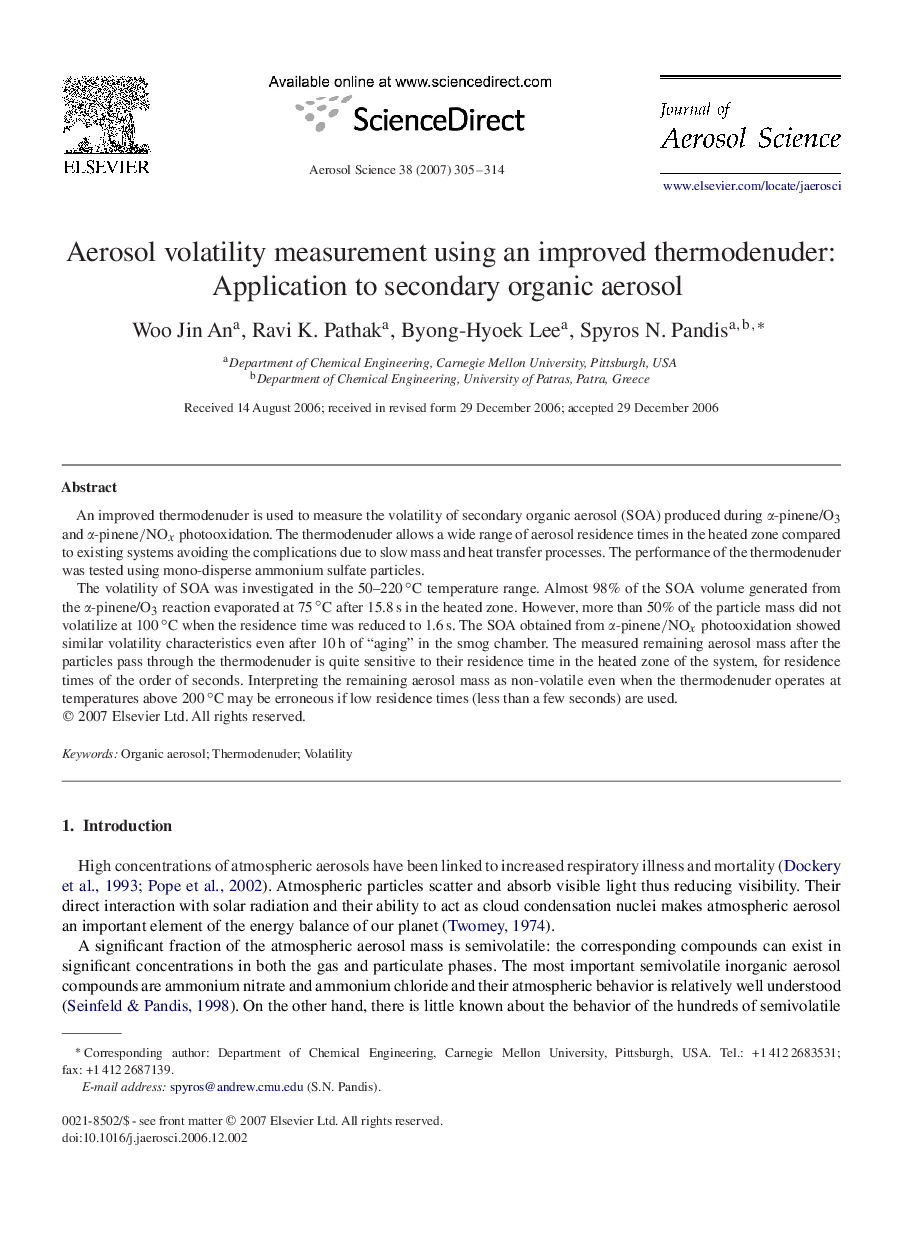| Article ID | Journal | Published Year | Pages | File Type |
|---|---|---|---|---|
| 4453225 | Journal of Aerosol Science | 2007 | 10 Pages |
An improved thermodenuder is used to measure the volatility of secondary organic aerosol (SOA) produced during αα-pinene/O3 and α-pinene/NOxα-pinene/NOx photooxidation. The thermodenuder allows a wide range of aerosol residence times in the heated zone compared to existing systems avoiding the complications due to slow mass and heat transfer processes. The performance of the thermodenuder was tested using mono-disperse ammonium sulfate particles.The volatility of SOA was investigated in the 50–220 °C temperature range. Almost 98% of the SOA volume generated from the αα-pinene/O3 reaction evaporated at 75 °C after 15.8 s in the heated zone. However, more than 50% of the particle mass did not volatilize at 100 °C when the residence time was reduced to 1.6 s. The SOA obtained from α-pinene/NOxα-pinene/NOx photooxidation showed similar volatility characteristics even after 10 h of “aging” in the smog chamber. The measured remaining aerosol mass after the particles pass through the thermodenuder is quite sensitive to their residence time in the heated zone of the system, for residence times of the order of seconds. Interpreting the remaining aerosol mass as non-volatile even when the thermodenuder operates at temperatures above 200 °C may be erroneous if low residence times (less than a few seconds) are used.
